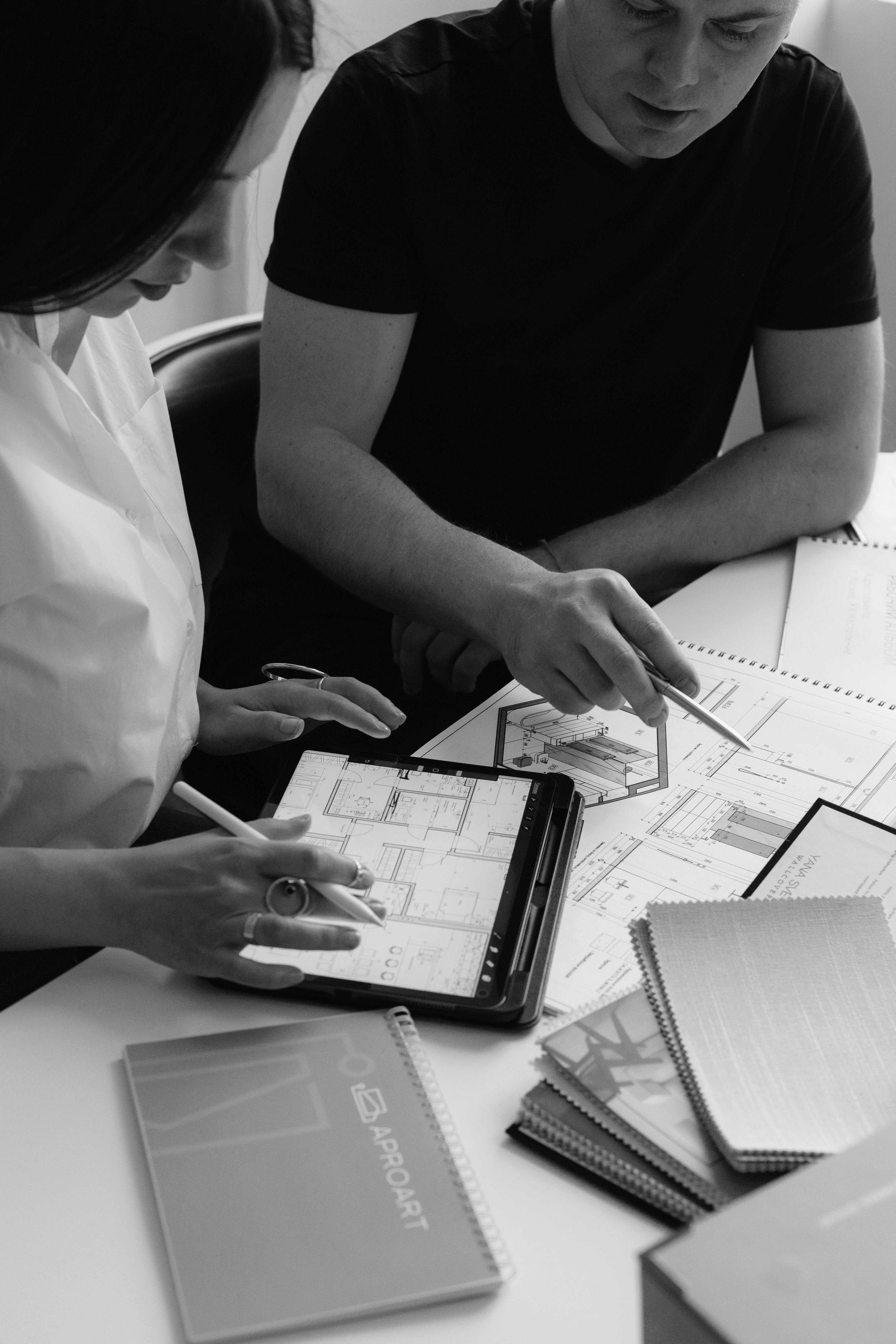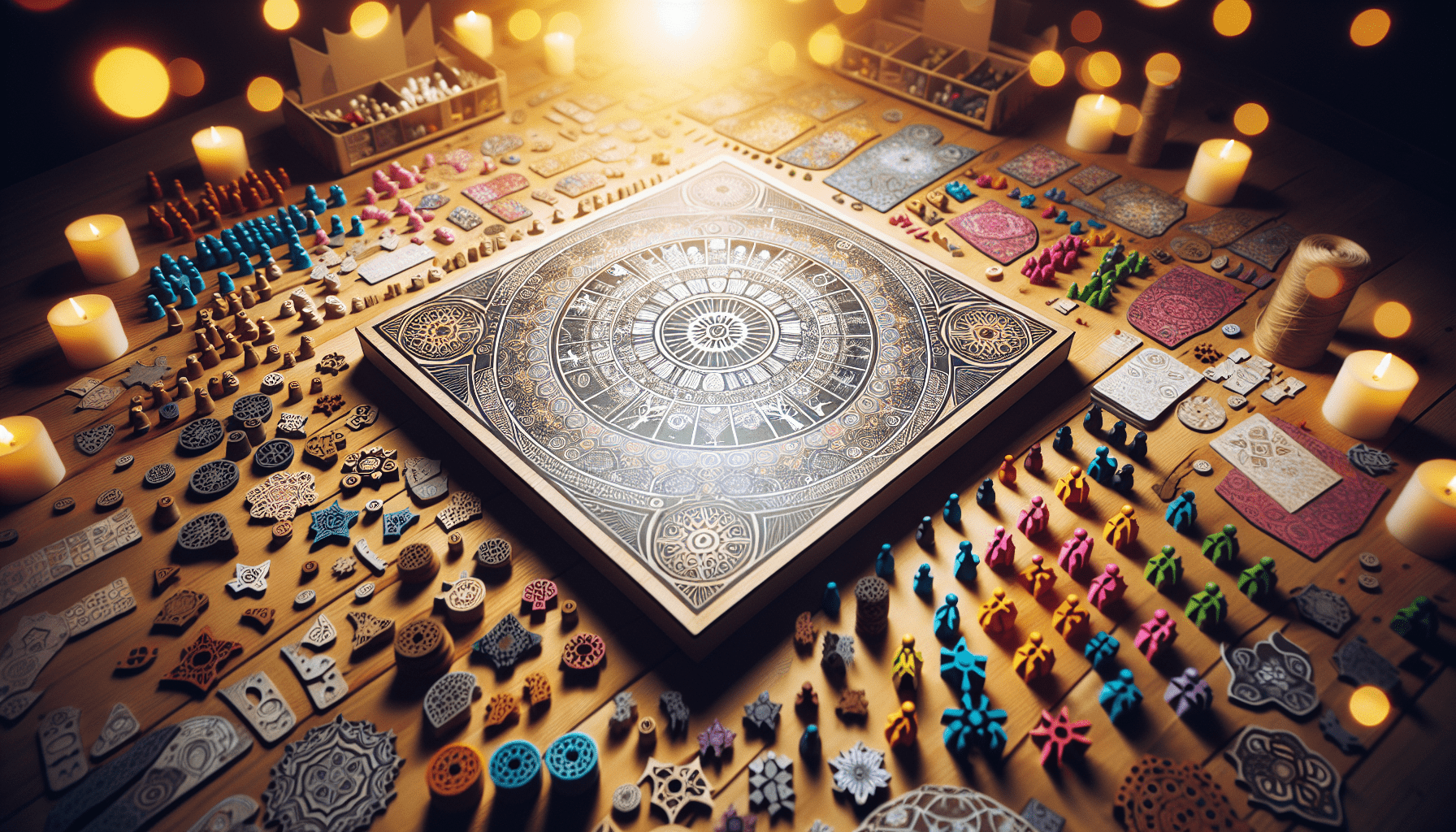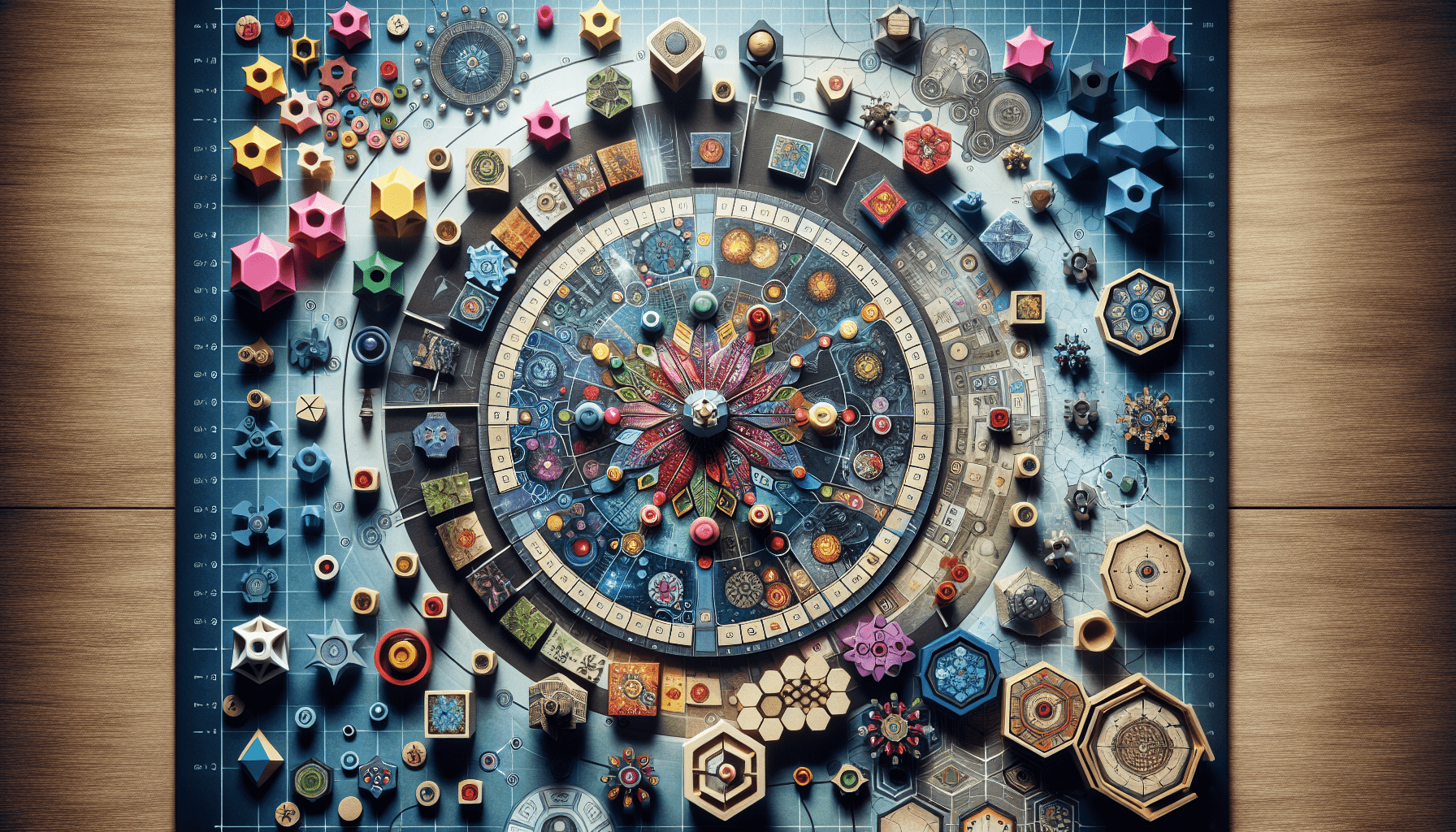Are you ready to embark on a creative journey and bring your own unique board game ideas to life? Look no further than custom board game design. With this exciting opportunity, you have the chance to unleash your creativity and create a one-of-a-kind game that reflects your own personality and style. Whether you’re an avid board gamer or simply love the idea of designing something from scratch, custom board game design is the perfect way to turn your imagination into reality. Get ready to experience the thrill of designing, strategizing, and playing your very own board game, tailored to your specific preferences and interests. Let the adventure begin!

Benefits of Custom Board Game Design
Personalized Game Experience
When you create a custom board game, you have the opportunity to tailor the experience specifically to your preferences and interests. This means that the gameplay, theme, and components of the game can all be customized to reflect your unique vision. By designing a game that aligns with your personal tastes, you can enhance the overall enjoyment and satisfaction you and your friends or family get from playing it.
Unique and Creative Gameplay
One of the most exciting aspects of custom board game design is the freedom to create unique and creative gameplay mechanics. By thinking outside the box and exploring new ideas, you can develop innovative gameplay elements that are not found in mass-market games. This allows you to challenge conventional game design norms and create a truly one-of-a-kind gaming experience that will captivate and engage players.
Opportunity for Custom Artwork and Design
Custom board game design presents an incredible opportunity to showcase your artistic vision and bring it to life. You can create custom artwork for the game board, cards, tokens, and other components, giving your game a visually stunning and cohesive look. Whether you’re a skilled artist or collaborate with a graphic designer, the ability to customize the visual elements of your game adds another layer of personalization and aesthetic appeal.
Promotes Creativity and Problem-Solving Skills
Designing a custom board game requires a high level of creativity and problem-solving skills. From conceptualizing the game mechanics to balancing gameplay and optimizing player interaction, every step of the design process challenges you to think critically and find innovative solutions. By engaging in this process, you can enhance your creative thinking abilities and develop valuable problem-solving skills that can be applied in various areas of life.
Key Elements of Custom Board Game Design
Thematic Concept
The thematic concept is the foundation of your custom board game. It sets the tone and narrative of the game, providing players with an immersive experience. Whether you choose a fantasy, sci-fi, historical, or any other theme, it’s vital to have a clear vision of the concept from the beginning. This will guide all other design decisions and ensure that the overall game experience is cohesive and engaging.
Game Mechanics and Rules
Game mechanics refer to the rules and systems that govern how the game is played. This includes elements such as turn structure, actions players can take, and win conditions. When designing your custom board game, it’s essential to carefully consider and refine the game mechanics to ensure a balanced and enjoyable experience for players. Iteration and playtesting are crucial in refining and fine-tuning the mechanics to create a smooth and engaging gameplay.
Components and Materials
The components and materials of your custom board game are another important aspect to consider. This includes the game board, cards, tokens, dice, and any other physical elements players will interact with. The choice of materials, such as cardboard or wood, can impact the durability and overall quality of the game. Additionally, the design of the components should be visually appealing and intuitive for players to use.
Player Interaction
Player interaction is a key element of board game design and can greatly influence the overall gameplay experience. Whether you choose to incorporate cooperative or competitive elements, it’s important to consider how players will interact with each other and the game. Balancing player interaction ensures that everyone remains engaged and that the game provides opportunities for strategic decision-making and social interaction.
Steps to Create a Custom Board Game
Define the Game Concept and Theme
The first step in creating a custom board game is defining the game concept and theme. This involves brainstorming ideas and narrowing down the focus of your game. Consider what type of gameplay experience you want to create and what themes or narratives align with your vision. Once you have a clear concept in mind, it will guide all other design decisions moving forward.
Design Game Mechanics and Rules
After defining the game concept, the next step is to design the game mechanics and rules. This involves determining the flow of the game, defining player actions and abilities, and establishing win conditions. It’s essential to create a balanced and engaging gameplay experience that offers meaningful decision-making opportunities for players.
Create Game Components
With the game concept and mechanics in place, it’s time to create the game components. This includes designing the game board, cards, tokens, and any other physical elements that make up the game. Depending on your artistic abilities, you may create the components yourself or collaborate with a graphic designer to bring your vision to life.
Test and Modify the Gameplay
Playtesting is a crucial step in the custom board game design process. It allows you to evaluate and refine the gameplay, identify potential issues or imbalances, and gather feedback from players. Through playtesting, you can make necessary modifications to improve the flow and overall enjoyment of the game.
Choosing the Right Tools and Resources
Board Game Design Software
Board game design software can greatly simplify the design process and provide useful tools and resources. There are several software options available that allow you to create game boards, cards, and other components, as well as manage game mechanics and rules. These software programs often include templates and libraries of graphics and artwork to aid in the design process.
Online Printing and Manufacturing Services
Once your game design is complete, you’ll need to get it manufactured. Online printing and manufacturing services provide a convenient and cost-effective solution for producing your custom board game. These services often offer a range of options for materials, finishes, and packaging, allowing you to select the best fit for your game.
Art and Graphic Design Tools
If you’re creating custom artwork for your board game, having access to art and graphic design tools is essential. Software programs like Adobe Photoshop or Illustrator can help you create professional-quality artwork for your game components. Additionally, stock image websites can provide a vast selection of graphics and illustrations to incorporate into your game design.

Considerations for Custom Artwork and Design
Hiring a Graphic Designer
If you’re not confident in your artistic abilities or simply don’t have the time to create the artwork yourself, hiring a graphic designer is a wise choice. Graphic designers have the skills and expertise to bring your vision to life and create visually stunning artwork that complements your game design. Working with a graphic designer can ensure that your custom board game looks polished and professional.
Exploring Artistic Styles and Themes
When designing the artwork for your custom board game, it’s important to consider different artistic styles and themes. This helps set the mood and tone of the game and can greatly enhance the overall visual appeal. Take the time to explore various styles, whether it’s realistic, cartoonish, or abstract, to find the aesthetic that best fits your game concept.
Creating Prototype Artwork
Before finalizing your artwork, it’s advisable to create prototype versions to test how they look and function within the game. This allows you to make any necessary adjustments or revisions before investing in the final production. By creating prototypes, you can ensure that your custom board game not only plays well but also looks visually captivating.
Testing and Play-Testing Your Custom Board Game
Organizing Playtest Sessions
Once you have a playable prototype of your custom board game, it’s time to organize playtest sessions. This involves gathering a group of playtesters who will provide feedback on the gameplay, mechanics, and overall experience. It’s important to observe how players interact with the game, listen to their suggestions and concerns, and take notes for future improvements.
Soliciting Feedback and Making Iterations
During playtest sessions, actively solicit feedback from your playtesters. Encourage them to share their thoughts on what they enjoyed, what they found challenging, and any suggestions they may have for improvement. This feedback is invaluable in identifying areas that can be refined or modified to enhance the game. Use this feedback to make informed iterations and continue testing until you’re satisfied with the game experience.
Balancing and Adjusting Game Mechanics
Playtesting also allows you to balance and adjust the game mechanics to ensure a fair and enjoyable experience for all players. Pay attention to any imbalances or loopholes that may arise during playtest sessions and make the necessary adjustments. Fine-tuning the game mechanics is crucial to creating a rewarding and engaging custom board game.

Strategies for Manufacturing and Production
Print-on-Demand Services
Print-on-demand services provide an efficient and cost-effective method for manufacturing your custom board game. With print-on-demand, you can produce games in small quantities or even on-demand, reducing the upfront costs and risks associated with traditional manufacturing. These services also handle order fulfillment, allowing you to focus on marketing and promoting your game.
Traditional Manufacturing Options
If you’re planning to produce your custom board game in large quantities, traditional manufacturing options may be more suitable. Working with a manufacturing company allows for greater customization options and economies of scale, resulting in a lower production cost per unit. However, traditional manufacturing usually requires a higher initial investment and longer lead times.
Packaging and Shipping
Don’t forget to consider packaging and shipping when planning for the manufacturing and production of your custom board game. The packaging should effectively protect the components and highlight the aesthetic appeal of your game. Additionally, it’s important to factor in shipping costs and logistics, especially if you’re distributing your game to customers or retailers.
Marketing and Promoting Your Custom Board Game
Building a Strong Online Presence
In today’s digital age, building a strong online presence is essential for marketing and promoting your custom board game. Create a dedicated website or landing page for your game, showcase gameplay videos and high-quality images, and engage with your target audience through social media platforms. Utilize online communities, forums, and industry influencers to generate buzz and gather feedback on your game.
Attending Conventions and Trade Shows
Attending conventions and trade shows is an excellent way to showcase your custom board game to a wider audience. These events provide opportunities to network with industry professionals, meet potential customers, and gain valuable exposure for your game. Be prepared to demo your game, have printed promotional materials, and engage attendees in conversations about your design process and the unique features of your game.
Establishing Partnerships with Retailers
Partnering with retailers is an effective way to get your custom board game in front of a broader audience. Research game stores and online retailers that align with your target market and pitch your game to them. Offer demo copies for them to evaluate and consider offering exclusive promotions or discounts to incentivize retailers to stock your game. Building strong relationships with retailers can significantly boost the visibility and sales of your game.

Legal Considerations and Intellectual Property
Copyright and Trademark Protection
Protecting your intellectual property is important when designing and marketing your custom board game. Copyright can be used to safeguard the originality of your game’s artwork, rules, and other creative elements. Trademarks protect your game’s name, logo, or other distinctive branding elements. It’s advisable to consult legal professionals who specialize in intellectual property to ensure proper protection and compliance with relevant laws.
Licensing and Permissions
If your custom board game incorporates licensed properties, such as characters, artwork, or settings from existing franchises, obtaining proper licensing agreements is essential. This ensures that you have the legal rights to use and distribute those elements in your game. Research the licensing process and requirements of the specific franchise you wish to incorporate and negotiate contracts with the appropriate parties.
Negotiating Contracts
When entering into agreements, such as licensing deals or partnerships with manufacturers or retailers, it’s important to negotiate contracts that protect your interests. Engage legal professionals experienced in contract law to help review and negotiate agreements that cover aspects such as exclusivity, royalties, intellectual property ownership, and dispute resolution.
Success Stories and Inspiration
Popular Custom Board Game Examples
There have been numerous successful custom board games that have captured the imagination of players around the world. Examples like “Gloomhaven,” a cooperative dungeon-crawler with an extensive campaign mode, and “Betrayal at House on the Hill,” a horror-themed game with a unique twist every time you play, have gained widespread popularity. Exploring these success stories can provide inspiration and insights into what makes a custom board game successful.
Indie Game Design Success Stories
Indie game designers have been able to achieve remarkable success in the board game industry. Titles like “Scythe” and “Spirit Island” gained a dedicated following and critical acclaim, despite being created by independent designers and published through smaller publishers. These success stories highlight the potential for custom board game designers to make their mark and find success within the industry.
Interviews with Board Game Designers
Interviews and discussions with established board game designers can offer valuable insights and advice for aspiring designers. Learning from the experiences of successful designers can help you develop a better understanding of the design process, marketing strategies, and challenges you may encounter along the way. Seek out interviews, podcasts, and articles featuring board game designers to expand your knowledge and find inspiration.
In conclusion, custom board game design offers numerous benefits, from personalizing the gaming experience to promoting creativity and problem-solving skills. By understanding the key elements and following the steps outlined in this article, you can embark on the journey of creating your own unique and engaging board game. From defining the concept and design to marketing and legal considerations, each aspect plays a crucial role in bringing your vision to life. The world of custom board game design is vast and full of possibilities, so take inspiration from success stories, learn from other designers, and embark on your own path to creating a custom board game that will captivate players for years to come.

